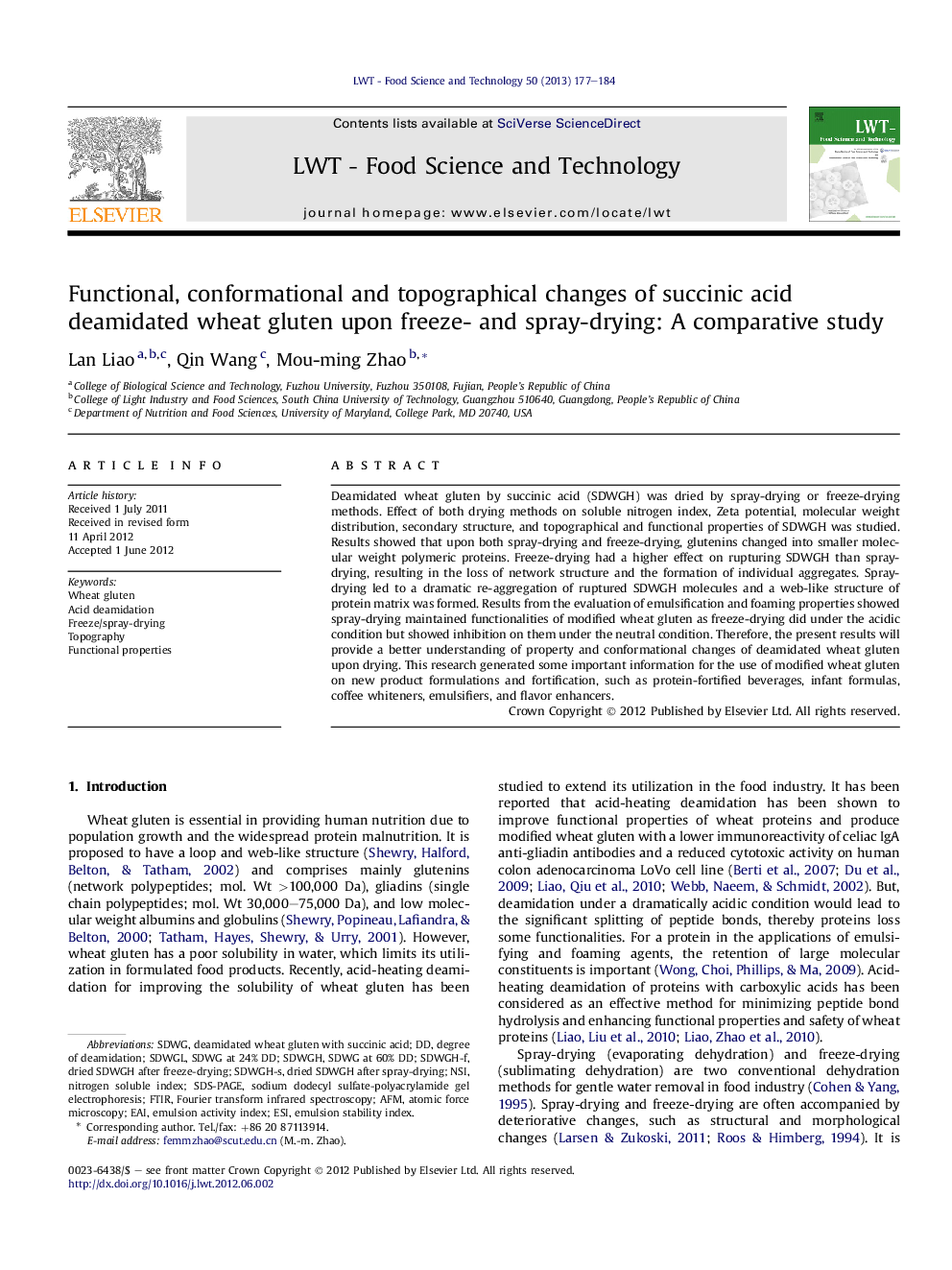| Article ID | Journal | Published Year | Pages | File Type |
|---|---|---|---|---|
| 6405010 | LWT - Food Science and Technology | 2013 | 8 Pages |
Deamidated wheat gluten by succinic acid (SDWGH) was dried by spray-drying or freeze-drying methods. Effect of both drying methods on soluble nitrogen index, Zeta potential, molecular weight distribution, secondary structure, and topographical and functional properties of SDWGH was studied. Results showed that upon both spray-drying and freeze-drying, glutenins changed into smaller molecular weight polymeric proteins. Freeze-drying had a higher effect on rupturing SDWGH than spray-drying, resulting in the loss of network structure and the formation of individual aggregates. Spray-drying led to a dramatic re-aggregation of ruptured SDWGH molecules and a web-like structure of protein matrix was formed. Results from the evaluation of emulsification and foaming properties showed spray-drying maintained functionalities of modified wheat gluten as freeze-drying did under the acidic condition but showed inhibition on them under the neutral condition. Therefore, the present results will provide a better understanding of property and conformational changes of deamidated wheat gluten upon drying. This research generated some important information for the use of modified wheat gluten on new product formulations and fortification, such as protein-fortified beverages, infant formulas, coffee whiteners, emulsifiers, and flavor enhancers.
⺠Both spray- and freeze-drying hydrolyze glutentin into smaller polymeric proteins. ⺠Freeze-drying disrupted protein network and separately individual aggregates was formed. ⺠Spray-drying dramatically re-aggregated sheared protein, which is a slightly web-like structure. ⺠Both dryings inhibited functionalities of samples under neutral condition. ⺠Results would provide some important information for the use of wheat gluten in food processing.
